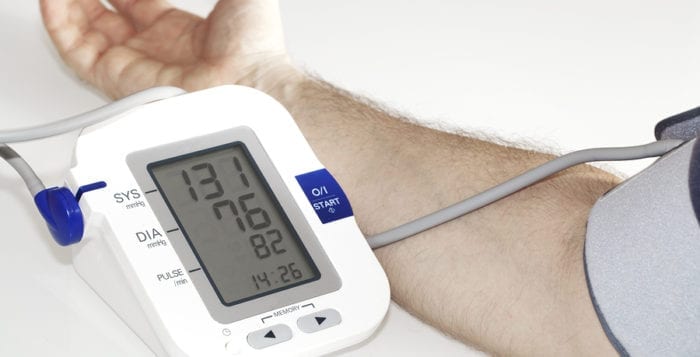Toenail fungus can have medical implications
By David Dunaief, M.D.

Summer is almost here, and millions of Americans are beginning to expose their toes. Some are more self-conscious about it because of a disease called onychomycosis, better known as nail fungus.
Nail fungus usually affects toenails but can also affect fingernails. It turns the nails yellow, makes them potentially brittle, creates growth underneath the nail (thickening of the nails) and may cause pain.
Many consider getting treatment for cosmetic reasons, but there are also medical reasons to treat, including the chronic or acute pain caused by nail cutting or pressure from bedsheets and footwear. There is also an increased potential risk for infections, such as cellulitis, in those with compromised immune systems (1).
Onychomycosis is not easy to treat, although it affects approximately 8 percent of the population (2). The risk factors are unclear but may relate to family history, tinea pedis (athlete’s foot), older age, swimming, diabetes, psoriasis, suppression of the immune system and/or living with someone affected (3).
Many organisms can affect the nail. The most common class is dermatophytes, but others are yeast (Candida) and nondermatophytes. A KOH (potassium hydroxide) preparation can be used to differentiate them. This is important since some medications work better on one type than another. Also, yellow nails alone may not be caused by onychomycosis; they can be a sign of psoriasis.
When considering treatment, there are several important criteria, including effectiveness, length of treatment and potential adverse effects. The bad news is that none of the treatments are foolproof, and the highest “cure” rate is around two-thirds. Oral medications tend to be the most efficacious, but they also have the most side effects. The treatments can take from around three months to one year. Unfortunately, the recurrence rate of fungal infection is thought to be approximately 20 to 50 percent with patients who have experienced “cure” (4).
Oral antifungals
There are several oral antifungal options, including terbinafine (Lamisil), fluconazole (Diflucan) and itraconazole. These tend to have the greatest success rate, but the disadvantages are their side effects. In a small but randomized controlled trial (RCT), terbinafine was shown to work better in a head-to-head trial than fluconazole (5). Of those treated, 67 percent of patients experienced a clearing of toenail fungus with terbinafine, compared to 21 and 32 percent with fluconazole, depending on duration. Patients in the terbinafine group were treated with 250 mg of the drug for 12 weeks. Those in the fluconazole group were treated with 150 mg of the drug for either 12 or 24 weeks, with the 24-week group experiencing better results.
The disadvantage of terbinafine is the risk of potential hepatic (liver) damage and failure, though it’s an uncommon occurrence. Liver enzymes need to be checked while using terbinafine.
Another approach to reducing side effects is to give oral antifungals in a pulsed fashion. In an RCT, fluconazole 150 or 300 mg was shown to have significant benefit compared to the control arm when given on a weekly basis (6). However, efficacy was not as great as with terbinafine or itraconazole (7).
Topical medication
A commonly used topical medication is ciclopirox (Penlac). The advantage of this lacquer is that there are minor potential side effects. However, it takes approximately a year of daily use, and its efficacy is not as great as oral antifungals. In two randomized controlled trials, the use of ciclopirox showed a 7 percent “cure” rate in patients, compared to 0.4 percent in the placebo groups (8). There is also a significant rate of fungus recurrence. In one trial, ciclopirox had to be applied daily for 48 weeks in patients with mild to moderate levels of fungus.
Laser therapy
Of the treatments, laser therapy would seem to be the least innocuous. However, there are very few trials showing significant benefit with this approach. A study with one type of laser treatment (Nd:YAG 1064-nm laser) did not show a significant difference after five sessions (9). This was only one type of laser treatment, but it does not bode well. The advantage of laser treatment is the mild side effects. The disadvantages are the questionable efficacy and the cost. We need more research to determine if they are effective.
Alternative therapy
Vicks VapoRub may have a place in the treatment of onychomycosis. In a very small pilot trial with 18 patients, 27.8 percent or 5 of the patients experienced complete “cure” of their nail fungus (10). Partial improvement occurred in the toenails of 10 patients. The gel was applied daily for 48 weeks. The advantages are low risk of side effects and low cost. The disadvantages are a lack of larger studies for efficacy, the duration of use and a lower efficacy when compared to oral antifungals.
None of the treatments are perfect. Oral medications tend to be the most efficacious but also have the most side effects. If treatment is for medical reasons, then oral may be the way to go. If you have diabetes, then treatment may be of the utmost importance.
If you decide on this approach, discuss it with your doctor; and do appropriate precautionary tests on a regular basis, such as liver enzyme monitoring with terbinafine. However, if treatment is for cosmetic reasons, then topical medications or alternative approaches may be the better choice. No matter what, have patience. The process may take a while; nails, especially in toes, grow very slowly.
References:
(1) J Am Acad Dermatol. 1999 Aug.;41:189–196; Dermatology. 2004;209:301–307. (2) J Am Acad Dermatol. 2000;43:244–248. (3) J Eur Acad Dermatol Venereol. 2004;18:48–51. (4) Dermatology. 1998;197:162–166; uptodate.com. (5) Pharmacoeconomics. 2002;20:319–324. (6) J Am Acad Dermatol. 1998;38:S77. (7) Br J Dermatol. 2000;142:97–102; Pharmacoeconomics. 1998;13:243–256. (8) J Am Acad Dermatol. 2000;43(4 Suppl.):S70-S80. (9) J Am Acad Dermatol. 2013 Oct.;69:578–582. (10) J Am Board Fam Med. 2011;24:69–74.
Dr. Dunaief is a speaker, author and local lifestyle medicine physician focusing on the integration of medicine, nutrition, fitness and stress management. For further information, visit www.medicalcompassmd.com or consult your personal physician.















